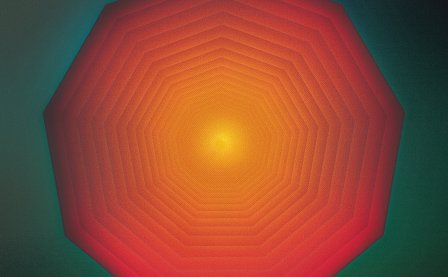When “Glass Bubbles” and “An Iris” dribbled out onto the internet in advance of All Tiny Creatures’ debut, Harbors, there was reason enough to be excited. They were both catchy as hell and single-ish, the former a layered electro-prog number draped in Ryan Olcott’s (of 12 Rods) shoegazey vocals, the latter relying on a mantra-like incantation courtesy Mr. Bon Iver, a friend and collaborator of bandleader Thomas Wincek. Considering the album in full, it almost feels like false advertising. The insanely prolific Wincek and his bandmates tapped a variety of Midwestern singers to provide the vocal parts to the album, including all three members of Megafaun on “Tine Feature,” Roberto Carlos Lange, and the aforementioned Justin Vernon. So there’s not much of a lead vocalist, nor any lead vocals, really.
There’s an important stylistic message there. Like on Brian Eno and Robert Wyatt’s “Flies,” a collaboration in a similar spirit, the architecture is more important than the words. So when Wincek chops and screws Vernon’s falsetto on “An Iris,” just like Kanye did, the focus changes from performance to composition. That’s Wincek’s approach elsewhere, too, employing MIDI-triggered micro-loops via foot pedal. But while the arrangements are well-orchestrated and the production crisp, the majority of Harbors just doesn’t live up to its pre-release singles.
This is because neither the duration of the songs nor the band’s preference for only the prettiest synth tones lend themselves to engaging compositional statements. “Valves or Hatches” acts as a setup for “Glass Bubbles” with its shimmering synth tones unfolding over almost two minutes. The former is a paper-thin gesture, though the single is solid. It adds very little, other than a feigned sense of cohesion, sounding like Neil Halstead fronting Kraftwerk (that’s a good thing) while also invoking the endless summer whims of a cabana’s worth of chillwave bands and bloggers with its final chorus “We’ll catch the next wave.”
In an interview with the AV Club, Wincek promised that the band would tour after Harbors on three keyboards and a drum machine, which shows how hard it is to describe a band like All Tiny Creatures without using unhelpful critic-isms like “burbling synths.” Because here, as ever, that’s what synths do; they burble. They sort of shimmer and change timbre slowly, not providing rhythm per se, just musical interest. Well, sometimes. On “Reservoirs,” that’s pretty much all that’s going on. Conversely, on “Aviation Class,” ultra-trebly arpeggios cut out of the mix, geometrically.
And speaking of geometry, minimalism rears its morphogenic head frequently on the album, but it doesn’t always work. The cartoon-y, Krautrock-tinged “Holography” doesn’t take you anywhere, despite its guitar interplay and breezy vocal figures. Minimalist concepts of gradual thematic development and brief melodic units don’t translate too well to the shorter pop song form. The National pull it off because they have a lot of character; without a vocalist, it’s really difficult for these songs to stand apart from one another. That said, it’d be great to see this album performed live, especially tracks like “Triangle Frog,” which are almost dubstep-ish in their use of white noise and enveloping electronic tones.
Harbors feels mannered, genteel even; the aesthetic is humanness within mechanical complexity, as the jet wings, lungs, and eye on the album art suggest. But the relegation of the human voice to an instrumental role and the almost complete lack of dissonance has exactly the opposite effect. The world is not, as it were, a collection of gently moving parts, orchestrated by the Great MIDI Synchronization in the Sky. That may be the illusion offered by the safe Harbors, but I’ll hold out for something more real.
More about: All Tiny Creatures


